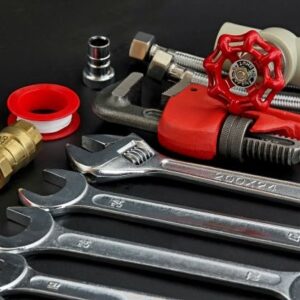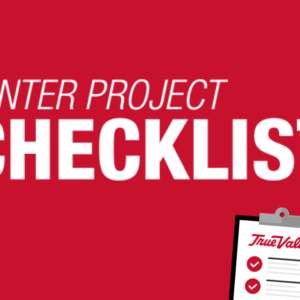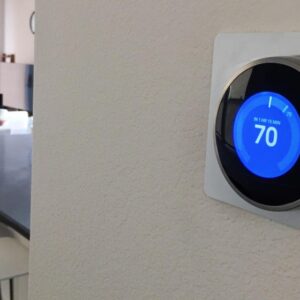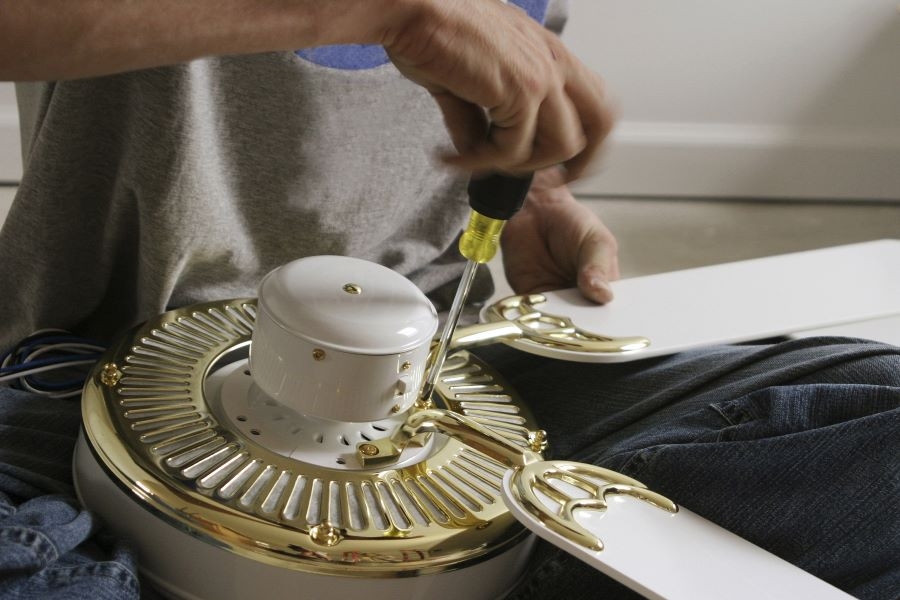Wobbling and shaking ceiling fans can be noisy and annoying. If you are looking for solutions for how to fix a shaky or wobbly fan, you came to the right place. Although it is normal for a fan to shake a little at high speeds, significant wobbling signals a problem.
In most cases, the biggest danger of a wobbly ceiling fan is parts loosening and falling. For example, lamp covers on a ceiling fan with lights may come loose and fall. Fortunately, a ceiling fan wobble rarely leads to injuries. However, objects falling from fans can damage flooring. Knowing why a ceiling fan is wobbling is the first step toward finding the right ceiling fan balance solutions so that you can fix the problem yourself.
Why Does My Ceiling Fan Wobble?
To properly fix the issue, you must first know some common causes of wobbly ceiling fans. These are some potential causes of a ceiling fan wobbling:
- Bent blade irons
- Warping
- Different blade sizes
- Different blade weights
- Unsecured blade irons
- Loose blades
- Loose ceiling mount
Now that you know some potential causes, the next step is troubleshooting to find the problem.
How to Troubleshoot a Wobbly Ceiling Fan
First, turn off the fan’s electricity supply, and keep it off until you are done working on the fan. The first task is cleaning it. Sometimes, dirt and debris may be contributing to a problem. And a clean fan is always easier to inspect.
When your ceiling fan wobbles, you will need a yardstick, a ruler, or a solid measuring device to help you find the cause. Make sure you have a sturdy stool or ladder. If you have high ceilings, have someone hold the ladder steady. Climb a ladder only if you have experience using one and can do so safely. Otherwise, call a professional to help you diagnose the problem. Here are some troubleshooting tips:
- Check all blade connections and their screws to see if they are secure.
- Carefully examine blades and arms to see if they look bent.
- Check to see if the electrical box is designed for ceiling fans.
- Make sure the fan mount bracket is secure.
- Use a ruler or yardstick to measure the distance of each blade from the ceiling.
- Check the manufacturer’s instructions to see if the fan should be lubricated regularly.
Be sure to measure the fan blades from the ceiling. Measure to either the highest or lowest point if they are angled. One of those troubleshooting tips should reveal the problem. If not, you may have a low-quality fan. As the experts say, a good ceiling fan will not wobble too much. A poor-quality ceiling fan may have blades of different sizes. If this is the case with your fan, you are better off buying a higher-quality product. Never try to use blades from another fan or do a “mix and match” project because this won’t give you an acceptable result.
How to Fix a Wobbly Fan: Tips to Balance Your Ceiling Fan
So, how do you stop a fan from wobbling? Depending on the cause you identified while troubleshooting, there are several solutions. Make sure the fan and the electricity supply for it are shut off before you work on the fan.
How to Fix a Wobbly Ceiling Fan With Loose Blades or Arms
For this project, you will need a ladder or stepstool and a compatible screwdriver. Tighten any loose screws you found during your troubleshooting inspection. Also, check the screws for any light fixtures or other parts to make sure they are secure. Turn on the electricity and the fan to see if it still wobbles. If it does, the fan may also be misaligned. If the other steps do not fix the issue, you may need a professional ceiling fan repair.
How to Fix a Ceiling Fan That Shakes Due to Improper Alignment
If you find that the blades are out of alignment or bent, aligning them can be tricky. Ceiling fan balancing usually requires adjusting mounting screws in the motor housing. For this process, you will need a ladder or step stool and a screwdriver.
Balancing a ceiling fan also requires patience. Tighten the screws on the misaligned blades gradually. Measure the distance as you go. Once they are even, inspect the blades and arms to see if they are bent. Sometimes, toys or other things that get thrown into the fan can bend the blades. If you’re feeling confident, you can try to bend the blades or arms back into shape if you feel confident. However, if they are significantly bent, damaged, or warped, it may be time to buy a new fan. You may be more apt to make repairs and order parts on the manufacturer’s site if your ceiling fan was expensive. If it was not, then a replacement may make more sense.
How to Use Weights to Stop a Ceiling Fan From Wobbling
When the blades are the same size and have different weights, you may be able to stabilize them. Some people use coins as added weights and adhere them to the blades. However, this is not the most reliable option. You can purchase a ceiling fan balancing kit for more favorable results. Follow the instructions carefully.
How to Fix a Wobbly Fan With Lubrication
After you check the manufacturer’s instructions, try this step if the company recommends lubricating the fan’s moving parts. Some manufacturers include a lubricant. If you still have this, great. If not, find out what kind of lubricant you can safely use on the fan. You may need to call the manufacturer if there are no clear details in the owner’s manual.
How to Fix a Wobbling Ceiling Fan With an Incompatible Electrical Box
If you loosened the bracket for the ceiling fan housing and found that the box was not rated for ceiling fans, it must be replaced. This task is not something you should attempt on your own. Call an electrician for your safety and convenience.
An Important Consideration: Fan Blade Direction
As you troubleshoot and attempt to fix the problems you find, remember to check the direction in which the blades spin. If you already do that, skip this step. Many people do not know that blade direction is important for different seasons. During the hotter months, the fan should spin counterclockwise. It should spin clockwise in the winter. Setting the fan to spin in a clockwise direction creates an updraft, bringing warm air down from the ceiling. However, it is better to run the fan at a lower speed during the winter.
To change the direction of the blades’ spin, look for a switch on the side of the motor housing. Simply push or flip the switch in the opposite direction whenever you need to change it. Doing this and using your thermostat correctly can help you save on energy costs. For fans that come with remotes or have wall controls, there may not be a switch. Consult your owner’s manual, look on the manufacturer’s website, or call the manufacturer for guidance on this task.
If your ceiling fan wobbles, now is the time to tackle this annoying problem. You can find the tools or ceiling fan repair kit you need for the job at your nearest True Value store.












